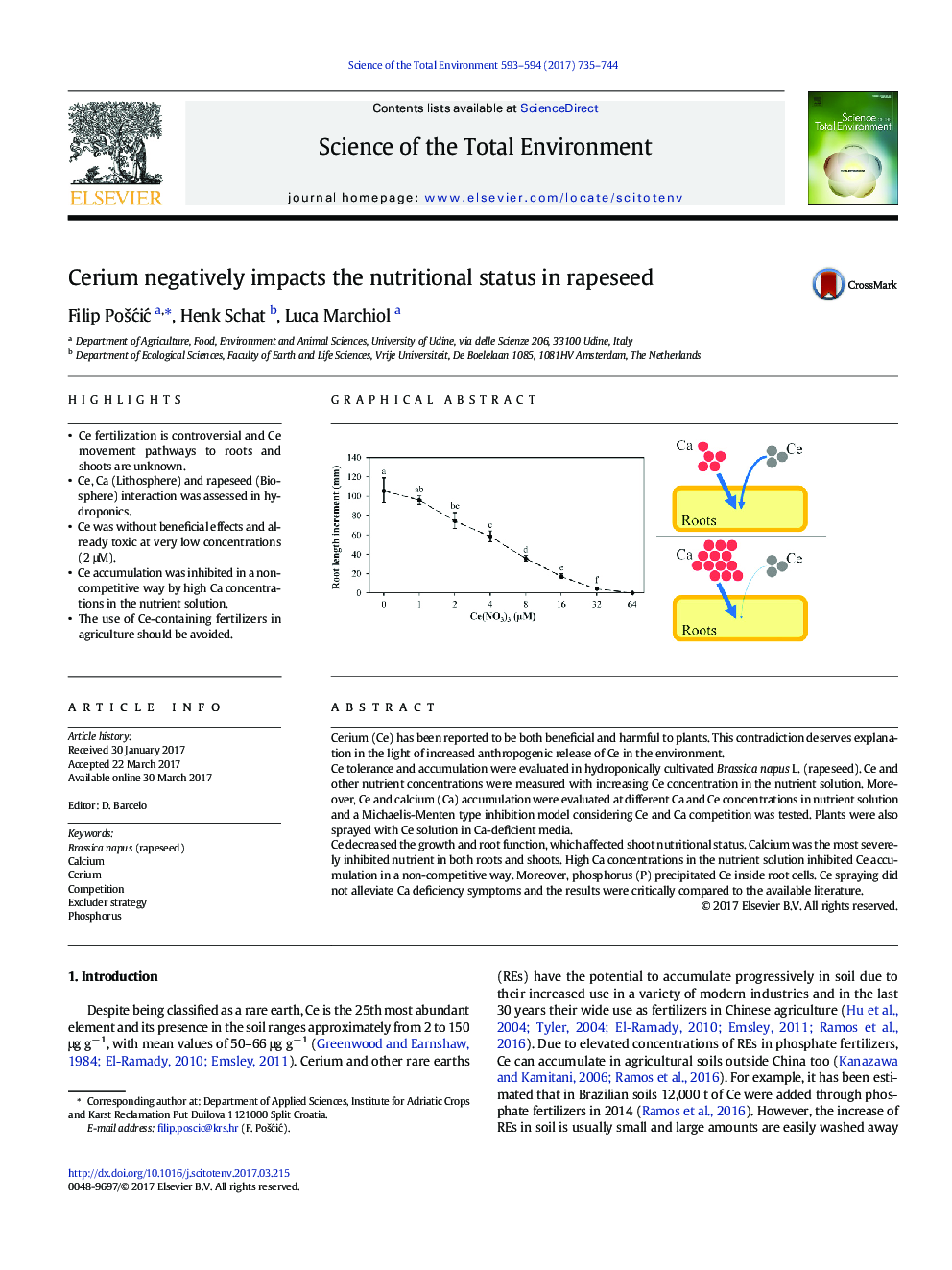| Article ID | Journal | Published Year | Pages | File Type |
|---|---|---|---|---|
| 5750902 | Science of The Total Environment | 2017 | 10 Pages |
â¢Ce fertilization is controversial and Ce movement pathways to roots and shoots are unknown.â¢Ce, Ca (Lithosphere) and rapeseed (Biosphere) interaction was assessed in hydroponics.â¢Ce was without beneficial effects and already toxic at very low concentrations (2 μM).â¢Ce accumulation was inhibited in a non-competitive way by high Ca concentrations in the nutrient solution.â¢The use of Ce-containing fertilizers in agriculture should be avoided.
Cerium (Ce) has been reported to be both beneficial and harmful to plants. This contradiction deserves explanation in the light of increased anthropogenic release of Ce in the environment.Ce tolerance and accumulation were evaluated in hydroponically cultivated Brassica napus L. (rapeseed). Ce and other nutrient concentrations were measured with increasing Ce concentration in the nutrient solution. Moreover, Ce and calcium (Ca) accumulation were evaluated at different Ca and Ce concentrations in nutrient solution and a Michaelis-Menten type inhibition model considering Ce and Ca competition was tested. Plants were also sprayed with Ce solution in Ca-deficient media.Ce decreased the growth and root function, which affected shoot nutritional status. Calcium was the most severely inhibited nutrient in both roots and shoots. High Ca concentrations in the nutrient solution inhibited Ce accumulation in a non-competitive way. Moreover, phosphorus (P) precipitated Ce inside root cells. Ce spraying did not alleviate Ca deficiency symptoms and the results were critically compared to the available literature.
Graphical abstractDownload high-res image (136KB)Download full-size image
